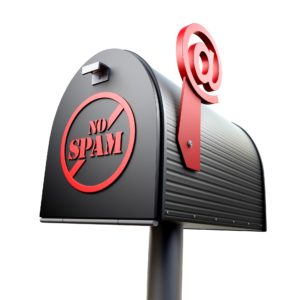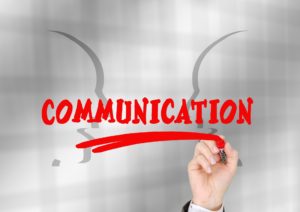What You Can Do To Make Sure Your Email Is Read

How can you get your emails opened
Sending emails is not enough, they must be read to be of any value to your business. But getting them read by your audience can be challenging. There are so many emails delivered to your audience’s inbox every day that yours could be overlooked if it doesn’t grab their attention straight away.
So how can you ensure your emails are read and get your audience to take the next step in your purchasing path?
1. Make Your Subject Intriguing But Specific
Audiences don’t like too big a surprise – they want to be sure that what they are opening has relevance to their needs or wants. At the same time, you don’t want to give the whole game away. Otherwise, they won’t read the email because there is going to be no new information for them to gleam.
2. Be Provocative
Sometimes, you need to try to get the audience to react strongly to your email. If they feel strongly about an email subject, they are more likely to open it to see if your views match. It’s the same kind of reaction that humans get about hearing of a secret, they instinctively want to know what the central message is.
3. Be Negative
Titles with negative words have higher open rates than those with positive titles. Why? Because as humans, we like to know we are better than someone else. So, you might create a title about the worst website design principles or terrible accounting practices because people want to know that they aren’t doing them to make them feel better about themselves.
Use words like:
- The worst
- Absolutely wrong
- No fewer
- Diabolical
4. Offer Exclusivity
People want to feel special about what they are reading. So, you should use words like VIP, special, exclusive etc. These are words that make people think they are part of a small community or that the offer is only for them. It increases their buy-in and their need to read the content to not miss out on whatever’s in the central message.
5. No Capital Letters
In email etiquette, words written entirely in capital letters are considered to be shouting at the audience. This is something that most people don’t enjoy so it’s best to avoid it whenever possible. Also, email filters are looking out for words in capitals and will block emails that contain a title without any lower-case letters.
5. Be Controversial
Don’t have a mainstream opinion about a current, trending story. That’s boring, and the audience has probably read the same arguments about a dozen times. So, what makes you different from them? Nothing.
Instead, take the opposite approach and be a little controversial. You could gain a little virality and be seen as someone with an original point of view.
6. Send Your Email At The Right Time
While people know that email messages don’t disappear, the evidence does suggest that emails have higher open rates at different times of the day. For many B2C organisations, the best time to send an email is often between 8 pm and midnight. But that doesn’t mean that’s right for your audience; you need to do A/B testing for your business’ audience before settling on the best time.
You should also look at what day to send emails. Some evidence suggests Tuesday to Thursday, but other evidence states that the weekend is a good time for sending emails.
7. Don’t Use A Brand Name For Sender Details
Just using a brand name for your sender details is going to reduce your open rate. Instead, you need to look at using an individual as the spokesperson for the organisation.
Conclusion
Getting your emails opened is important. It helps improve sales and can grow your business without too much expense. You can improve your open rates, and therefore your sales by using some of our tips above.
How do you maximise open rates? What time and day do you send your emails?
Let us know in the comments below.
Read post Post a Comment. Tagged in: Email Strategy, open rate
This Is Why You Should Not Buy An Email List

Don’t buy an email list
An email list is one of the best marketing assets your business will have. The Return On Investment for email marketing far exceeds that of any other digital marketing streams. That’s why business leaders and marketers try very hard to build a large marketing list.
However, some business leaders and marketers, in their rush to grow a big list, will buy email details. The advantage of this is that you can collect a large list of emails very quickly and with limited cost. But there are significant risks to buying an email list – ones which could make it very hard for your business to even market itself.
Here’s a list of reasons why you shouldn’t buy an email list.
1. Illegal Process
One of the most important arguments against buying an email marketing list is that it’s against the law to market to individuals who have not given you permission to contact them. If you fail to adhere to this rule and market to those who have not given you permission, you can be fined. Without direct communication with the email’s owner – you have no idea whether they have given permission to be contacted for marketing and they haven’t given you permission anyway.
Even a B2B marketing list can suffer the same disaster. Any sole trader or partner business is treated as an individual and therefore, you need their contact details. Incorporated emails can only be emailed without permission if they don’t contain any identifiable information, i.e. their name.
2. Fake/Outdated Email Addresses
Fake or outdated email addresses are a major issue when buying an email list. Even email address you can’t deliver to increase your costs to send but offer you no benefit. Also, they can slow down your email server which can affect how your business works.
Also, if you use email marketing service providers, fake and outdated email addresses uploaded to their servers will be reported. In most cases, the email marketing service provider will cancel your contract.
3. Low Engagement Rate
Email marketing lists that are bought have a significantly lower engagement rate than those which are collected organically. Therefore, the return on investment can be significantly lower, and in fact, the money might as well be spent on other, more white-list strategies such as SEO and PPC.
4. Blocked Email Server
One of the costliest repercussions of your email marketing list being bought is that your email server can be blacklisted. This happens when too many of your ‘subscribers’ state you are spam, or complain that they didn’t subscribe to your marketing emails. Eventually, a mail server will be blacklisted that will prevent emails from being delivered.
The only way to repair this is to start over with your email server – but this is very expensive and time-consuming.
5. Morale Killer
Whether you work on your email campaigns, or another member of your team does, using an email marketing list can be a morale killer. Imagine you buy a list of 100,000 and just 100 or 200 of those reply to your email with emails such as ‘not interested,’ ‘stop emailing me,’ or ‘stop spamming me.’ This isn’t good for morale, nor is a higher unsubscribe rate.
This can have a disastrous impact on how you or others see the business. This can lower productivity and lessen positive interactions between those staff and genuine customers. Therefore, real sales can be reduced hurting your business’ revenue stream.
Conclusion
Buying an email list is not the best process for growing your assets and business. Instead, you need to grow your business’ organic email subscription by using lead magnets, online forms, and other methods to attract potential customers to subscribe and read content they want to hear. This might be the long-term strategy, but it is the best for costs and return.
Have you ever bought an email list before? What happened?
Let us know in the comments below.
Read post Post a Comment. Tagged in: Email list purchase, email marketing strategy, optin strategy
The Benefits Of Not Doing Your Own Email Marketing

Email marketing results can be better when you outsource
Many businesses outsource their email marketing hoping to get better returns on their marketing investments and grow their business. In fact, with the ROI of email marketing making it one of the best digital marketing sales channels, outsourcing your email marketing could be a great decision to make.
Here are some of the benefits of outsourcing your email marketing and having a professional digital agency do the work for you.
1. Save Time
While email marketing is cost effective, it can still take a significant amount of time; especially if you aren’t particularly skilled at email marketing. Your time could be better spent servicing your customers.
There are two main benefits of spending more time on your customers. Firstly, you can provide a better service to your current customers and therefore delight them more, improving your customer retainment rate. The second benefit is that you can improve productivity, allowing you to serve more customers and increase your potential income.
2. Better Result Analysis
Do you know how to read the email reports you get? Very few people do. That’s why it’s helpful to get a person who knows how to read email statistics to look at them. They can tell you who’s a non-responder on your email list and should be sent a re-engagement campaign or removed, and they’ll help you determine who’s ready for the next stage in your sales funnel.
This can help you save money and pick up sales that you otherwise wouldn’t get. A typical example of this would be seeing a customer open an email and click through to a sales page several times but not buy. A professional digital marketer should tell you about this behaviour, so you can call the lead and see if you can help them.
3. Better Designs
Everyone judges a book by the cover and your emails are no different. Professional digital marketers can design captivating emails for you to use that will attract your audiences and generate sales.
They will even know what the best copy is for your email marketing campaigns. This will include subject lines, preheader text, body copy and call-to-actions. These can make all the difference to the results of your campaign.
4. Reduce Mistakes
Errors made on email marketing systems are one of the biggest reasons why email marketing results aren’t what they should be. However, a trained and experienced email marketer will be able to spot mistakes and correct them before email campaigns are sent.
Fewer mistakes also gives a more professional image for your brand.
They will also help you to maintain your email marketing within the legal constraints of your country. A breach of the digital communications law can lead to heavy fines.
5. Greater Consistency
When you set expectations, customers will want to see you match them. This can be in the design of your emails, the timing of your emails or the frequency. If you do your email marketing yourself, it’s easy for you to forget your email marketing during a busy week or accidentally set it for the wrong time.
Any outsourcer will keep consistency in mind and are likely to help you stick to deadlines.
Conclusion
Email marketing is one of the best digital marketing avenues for your brand. Not only is it cost effective but it can achieve more sales than any other digital sales path available. However, some businesses are missing out because they aren’t utilising the skills, knowledge or experience of professional email marketers.
Hiring an email marketer might just be one of the best investments your business makes.
Have you hired an email marketer? How did they improve your results?
Let us know in the comments below.
Read post Post a Comment. Tagged in: email agency, Email Strategy, outsourcing
5 Awesome Email Campaigns You Need To Learn From
When i t comes to marketing to your prospects via email, there are countless designs, content ideas, and strategies that can make or break your business. However, there are also millions of other business email campaigns being delivered every day that you should be learning from.
t comes to marketing to your prospects via email, there are countless designs, content ideas, and strategies that can make or break your business. However, there are also millions of other business email campaigns being delivered every day that you should be learning from.
Here are five awesome email campaigns that you can learn from. Not every email has had the same purpose. Some have been designed to re-engage an audience, others for sales or perhaps a welcome email.
So, what are these five awesome email campaigns?
1. Pinkberry
For whatever reason, sometimes you’ll find that people are no longer reading your emails. It might be because an email address has become old and no longer monitored, or because they’ve grown bored of the content. Whatever the reason, inactive email accounts on your list cost money.
Pinkberry came up with the solution to offer a free frozen yogurt to their account if they respond. It instantly makes the re-engagement campaign more enticing to readers and helps to bring them back into the fold.
2. Envelopes
According to research, nearly two-thirds of all shopping carts are abandoned. That’s a lot of wasted potential revenue on any given website. To reclaim some of those abandoned carts, you need to remind your customers that they’ve abandoned their cart in a series of emails.
Research and tests conducted by MarketingSherpa with Envelopes.com found that sending three emails got the best results. They sent an email 24 hours after the cart was abandoned, then they sent another 48 hours after the cart was abandoned, followed by a third email with a discount code, 60 hours after the card was abandoned.
3. Petflow
The online pet retailer achieved $30 million in sales in 2012. Part of their success is down to their social media and email marketing campaigns. They have over one million fans on Facebook, and they use that to great effect on their email marketing campaigns.
In one email, they bring a lot of elements together to make it a great campaign that is really convincing. Firstly, they add a line of how many units of a particular product have been sold. To add to this social proof, they include reviews from real customers and some Facebook comments.
Finally, to make it really convincing, they add a high-value discount code.
All this combined works because word-of-mouth recommendations (including social media) are primarily responsible for up to 50% of all purchases and customers are more likely to purchase if there are positive reviews about a product/brand.
4. Charity: Water
Email marketing is often thought of as transactional. You send an email to get something in return, purchase, information, etc. However, other emails act as marketing content which can boost your interactions and promote your brand.
The charity Water, is one company that really makes this happen. As soon as someone donates to their cause, their money takes a journey and the customer is given updates along the way. This strategy demonstrates how their donations are making an impact and increase the chance of another donation being made or that the individual recommends the charity to other donor.
5. BuzzFeed
BuzzFeed is a popular email sender. Their subject lines are normally thought-provoking, and they have great preview text that encourages people to read their emails. One example of their tactic is to ask a question in the subject line and give an answer in the preview text.
Another tactic is to give a command in the subject line while the preview text is the next logical thought. This conversational tone makes the emails really engaging which is why they have a high open rate.
Conclusion
There are so many ways to create, design and write emails and some campaigns are awesome. While you can’t copy them exactly, you can learn from their greatness and apply the lessons to your campaigns to improve your open rate and sales.
What campaigns have got you the best results? What made them different?
Let us know in the comments below.
Read post Post a Comment. Tagged in: email marketing campaigns, email marketing schedules
What Happens When You Spam Your Contact List

What happens when you send spam to your contact list?
Email marketing is a powerful sales tool. But, like with all marketing and sales tools, there’s an element of the numbers game; the more marketing you send, the more sales you’ll achieve. Therefore, there are those organisations who are willing to ignore laws and email etiquette and send copious amounts of emails to subscribers or to email addresses they’ve had no contact with.
This is called spamming.
While this might sound like a good way to grow your customer base, it’s not. There are significant ramifications associated with this practice. Here’s what could happen if you spam your contact list.
1. You Get Fined
If your contact list didn’t give you permission to contact them, then you could be fined. Many nations have laws against unsolicited marketing emails, and the fines can be high. While most people ignore spam, the more you send out, the greater the chance you will be reported to the relevant authorities.
Never buy an email contact list and always seek permission of any website user, consumer, etc. before you send an email.
2. Higher Unsubscribe Rate
The more people you have on your list, the more profitable your email marketing campaigns are going to be. That is why this loss can be so devastating, but 53% of consumers say they get too many emails from the brands they subscribed to and this has led them to discontinue their subscription.
However, don’t send too few emails, as this can also be a reason for unsubscribing. According to research, once every two weeks seems to be a good frequency.
3. Poor Open And Click Through Rates
If you continually email your contacts, they are going to get bored of your marketing messages, especially if you are sending the same message all the time. This often results in your marketing messages being ignored, binned and forgotten. Statistically speaking this can mean that your business’ open and click through rates plummet against industry standards.
There are two ways to solve this. Firstly, reduce the amount you are sending emails to your contact list. Secondly, change the message of your email marketing campaigns, so they become more useful.
4. Your Server Gets Reported
If you are using your own mail server, then that can be reported, and this can make it difficult for future campaigns. A black-listed mail server can sometimes be prevented from sending emails to other servers altogether, so future campaigns will never reach their intended audience.
There is only one way to solve a blacklisted server, and that is to start again with a new server. This is an expensive, time-consuming task.
5. Your Reputation Is Ruined
Organisations that spam their contacts are often remembered, especially if they are known to the audience. This can have a devastating impact on a brand’s reputation both online and offline. One example could be the damage it can do to the referrals your brand gets from subscribers. Many people won’t recommend a brand that spams them. So, you’ll lose a sales avenue.
You’ll also find that you will have to manage your reputation more carefully if you send spam – dealing with negative comments all the time on social media, in your inbox and other marketing avenues. Customers you contact for a follow-up phone call will also be more hostile to your approaches. Therefore, your sales team will find it harder to sell.
Conclusion
Email marketing is a powerful tool for any business to use to collect information and sell to a specific audience. It is also a tool that can be abused with spam. However, this will always end badly for the company sending spam emails.
Be mindful of the number of emails you are sending to potential customers to ensure you aren’t spamming your audience. It could help you make more sales.
How often do you send emails to your marketing list? Have you tried reducing the number?
Let us know in the comments below.
Read post Post a Comment. Tagged in: ant-spam, spam, spamming
7 Powerful Email Marketing Strategies That Convert Readers Into Buyers

How can you make more money from your emails?
Email marketing may be one of the best ways for you to achieve sales but it doesn’t mean your business will automatically make sales just because you are utilising it. Instead, you need to carefully plan your business’ email campaigns and generate an interest in your offers. This is done through careful design and the use of psychological triggers.
Here are our seven powerful email strategies you can use to convert your subscribers into loyal buyers.
1. The Time Of Day You Send Your Emails
Sending emails later in the day can be an effective way to encourage sales. Some people state that 8:00 pm to midnight is a good time. Mainly because decision fatigue is higher in the evening which often leads to greater impulse buying.
However, if you are a B2B business, this might mean your email is lost overnight. Instead, consider sending your email about 4:00-5:00 pm.
2. Urgency
There is nothing more worrying to a buyer than potentially missing out on an offer or business advantage. That’s why it’s important that you include some urgency within your offer to encourage the reader to act fast.
There are several ways you can do this, for example:
- Have a limited edition.
- Limit the number of people who can buy your product or service.
- Limit the time the offer is available.
- A combination of the above.
3. Personalise But Not With Their Name
You might think that using a subscriber’s name is one of the best ways to grab their attention, however, research has found it can harm your sales. This is most likely because it is overused and easy to implement, so it has little value.
Instead, you should use other identifying data to relate to your subscribers and get them to pay attention to your brand. An example would be an automatic email that identifies a recent action on your website.
4. Create Killer Subject And Preheader Lines
The subject line of your email is the first thing that people are going to see in their mailboxes. The preheader line is the next thing they are going to see. These two lines can make or break your email’s results.
If you don’t have value and urgency to your email, and don’t let the recipient know what the email is about, your open and click through rates will likely reduce.
It’s also important to consider the length of the subject line. Anything between 70-90 characters won’t get great results. Subject lines above this will get more opens and subject lines longer than this will get more click throughs generally.
5. Entertain And Educate
You should try to minimise your email’s selling, and instead, try to email your audience on a regular basis with informative content that makes them smile. This helps to show your personality and you can use other marketing content like blog posts, YouTube videos or short courses online to expand on your message.
It’s important to use autoresponders in your campaigns as this can lessen the strain on your business to create content on a regular basis.
6. Don’t Forget Mobile Users
While you are creating emails, it is important not to forget that more than half of your email subscribers will be using mobile devices like tablets and phones to read their mobiles. If your mail doesn’t look right on their device, then you aren’t going to make a good impression.
Ensure your emails are optimised for mobile and look at it on different devices. Some tricks can be found here.
7. Utilise Weekends
You might have packed up for the weekend, but the internet hasn’t, nor have your subscribers. Studies have shown that compared to weekday emails, those sent on Saturday and Sunday do perform better.
Though ironically, Thursday seems to be the day where the largest orders are made, and Wednesday is when the cost per transaction is lowest.
Conclusion
When was the last time you sent an email that got you results? Try adding a few of our tips above and see whether they can help you improve your business’ email marketing campaigns. It could help you grow your business without the need for substantial investment.
Have you tried our tactics above? What were the results?
Let us know in the comments below.
Read post Post a Comment. Tagged in: Email Strategy, email tactics, selling emails
How To Get Your Emails Opened And Clicked

How to get more opens and click through rates.
Sending emails to your subscribers is only half the battle; you should also ensure the recipients are opening and acting on your mail. This can be trickier than you might think. Open rates vary between industries and even demographics, yet there are common elements and tactics that can usually help you improve your statistics.
So what tactics do we recommend for improving your open rates and click-throughs?
1. Personalisation
How do you get your audience to care about your message? Make the message about them with personalisation. This can be done with a simple insertion of the recipient’s name; though that isn’t always enough.
Sometimes you have to try something more advanced, such as sending campaigns that are segmented based on subscriber behaviour or demographics. The more specific the information to the reader, the greater the chance they will take action.
2. Pre-header Text
Sometimes a subject line isn’t enough for your audience to act; they need more information. While information within the email is probably sufficient, some mail browsers aren’t going to display this. Instead, you need to use pre-header texts.
These should be about 100 characters long and give detailed information about what is included in the email including a strong call-to-action.
3. Use Powerful Call-To-Actions
A call to action is the tool you use to ensure your audience takes further action. However, too many small brands don’t use the best call-to-actions when encouraging readers to carry on the purchasing journey. For instance, many use ‘click here’ which is overused.
A call-to-action should have three parts to it:
- Urgency (so the user doesn’t wait for fear of missing out).
- Definition of the action to take (so they know what to do).
- Value (so they know what their reward is going to be).
Without these elements, call-to-actions are pointless.
4. Mobile Friendly
More than half of all emails are now opened on a mobile device. If your email isn’t optimised for mobile devices, which includes phones and tablets, then you can lose out as when the customer gets to a desktop, they’ve received other emails which they want to deal with.
Some of the major issues with emails on mobiles is the image size. If it is too big then it will consume time and data limit on mobile devices. Limit images to the proper size, no more than 600 pixels wide, and minimise their memory usage.
5. Send Your Emails At The Right Time
Different audiences will read and respond to emails at different times. If you don’t send emails at the right time, then you will find that less emails will be read. There are numerous studies into when the best time to send emails is; however, they rarely agree.
The only way to ensure you are sending your emails at the best time for your audience is to test. This should be done via split testing, where two times are tested and the result analysed. This should be done several times with the best time from the previous test pitted against a new time.
The test should also be done with regards to day. Some brands find that weekends are better than weekdays.
6. Be Concise
Try to limit your emails so they are only about 150-200 words long. This gives the audience enough data to make an informed decision but isn’t too long that they get bored while reading the message.
If your content needs more information, try linking it to a landing page where users can read more.
Conclusion
Your emails are the best marketing platform you have. They consistently have the best return on investment and you can monitor direct results.
However, that doesn’t mean your campaigns will automatically be great. You will need to optimise your campaigns to ensure audiences are opening and responding to your campaigns. Use the tips above to help guide you to improve your email campaigns and get the best results.
Do you have any email marketing tips? Do you optimise your emails for mobiles?
Let us know in the comments below.
Read post Post a Comment. Tagged in: email click through rate, email open rates, email statistics, Email Strategy
6 Email Marketing Tips You Don’t Want To Do

Don’t use the wrong information
If you look online, there’s a lot of advice about email marketing. Some of it’s great, it will help you expand your brand’s mailing list and convert more people, but not all the advice out there is good for your business.
Some information out there can damage your brand’s image and cost you financially. Here are six of the worst email marketing tips.
Mistake No. 1 – Buying Email Addresses
This is possibly the worst email marketing tip you could ever read. In many countries, contacting people via e-mail without their permission is against legislation. For instance, in North America and Europe, you can’t contact someone for marketing purposes without their permission.
This is a type of spam that can have your mail server blacklisted, preventing you from contacting anyone, or you could receive a fine.
Email addresses should never be bought. For some countries, particularly Canada and US states, you should be using the Double Opt-in Subscription system to ensure that audiences want to receive your marketing information.
Mistake No. 2 – Send Emails To Everyone
Like with everything, consumers are all different. They’ll have different motivations, challenges, etc. that you need to discover and market to. Sending messages that have no appeal to your audience won’t convince them to buy.
Instead, you need to segment your audience and send relevant emails to each group. Segmentation can be based on demographics (age, location, gender, occupation, etc.) or behaviours (high spenders, recent website visitors, etc.)
Mistake No. 3 – Don’t Personalise
By not even mentioning the receiver’s name on their email, you are demonstrating your lack of care for the individual. How the audience is addressed can have a massive impact on conversions.
So, don’t skimp on personalisation.
As well as addressing them by name, think about their behaviours and incorporate that in the email copy.
Mistake No. 4 – Don’t A/B Test Your Content
Testing your content against your audience is an important aspect of marketing. One of the best ways to test content is to A/B test it (split testing). This is where you divide your audience into two groups and then make a small change to the content (i.e. different font). Then you can look at the results and see which content your audience prefers.
It’s best to always test your content with one small change at a time. Your marketing campaigns should be tested regularly, as you won’t know what the best optimisation for your brand is until you’ve exhausted all possibilities. Considering there are an unlimited number of combinations, this should mean there is never a time you won’t be testing.
Mistake No. 5 – Text All In Capital Letters
Have you ever read an email or text in capital letters? It seems like that the person is shouting to get your attention. This isn’t the image you want to portray; why would anyone buy from you if you are shouting at them? They are more likely to unsubscribe and never engage with your brand again.
While capital letters can be used to highlight something in an email, it should seldom be used. It’s much better to highlight content using bold lettering or a call to action.
Mistake No. 6 – Send Your Emails Whenever You Want
Another piece of poor advice is to not worry about what time you send emails. Firstly, this can damage visibility of your content. If you send them at busy periods, then your marketing messages will be lost in the sea of emails someone receives.
Secondly, if you send the emails at the wrong time, the email could be ignored, and they might not catch the email until the offer has expired.
Instead, you need to discover the best time for your brand to send emails. While there’s a lot of information available about this online, it might not be accurate. Every audience has different behaviours, and therefore, you should test your audience’s preferences.
Conclusion
Email marketing is one of the best ways to promote your business and convert customers. There is a lot of information online about the ‘best practices’ for email marketing, just be sure you are reading the best advice from a reputable source.
What bad advice have you been given? What happened to your business’ marketing campaigns as a result?
Let us know in the comments below.
Read post Post a Comment. Tagged in: email marketing advice, email marketing strategy, email marketing tips
6 Reasons Why Your Business Needs To Do Email Marketing

Why do you need email?Ema
Digital marketing is proving to be highly successful. It offers businesses increased profits by lowering costs and increasing sale opportunities. There are lots of different online marketing channels, but some of them are more effective than others.
This is why some brands only employ certain digital marketing channels.
The one channel we would really recommend is email. Email marketing has shown that it can outperform all the other channels in sales, and it’s easy and cheap to maintain.
But don’t just take our word for it; here are six reasons why your business needs email marketing:
1. Email Marketing Has The Highest ROI
The median ROI for email marketing, as discovered in a 2016 survey, was 112%; more than four times better than any other marketing format. This ROI wasn’t just for 2016. Research has constantly shown that the ROI of email marketing is far better than other digital and offline marketing channels.
Part of the reason is that sending an email is cheap; especially when compared to sending direct mail or making a phone call.
2. Email Marketing Can Reach Customers On The Move
The growth in the use of mobiles is giving more prominence to emails. More than half of emails are now opened on a mobile device. This means that no matter where your audience goes, they can receive your marketing message.
This can’t be said for direct mail or display adverts.
Emails can help you reach customers at important times; such as when they are out shopping or on the move. It also allows them to take advantage of the deals you have on offer, by taking vouchers contained within your email on the go, instead of printing them off at home.
3. Email Activity Can Be Traced
One of the best benefits of email marketing is the ability to check who is reading and taking interest in your marketing messages. This can be useful as one important step of email marketing is sending follow-up messages.
Say you send a deal about a new product; you can grab a list of all those who opened, read, and clicked through to the link on the email and then send them further information. This new information might convince them to make a purchase.
4. Emails Can Be Automated
Whether it is an auto-sequence, cart-abandonment email, or a behavioural response sequence – your email marketing campaigns can be pre-written and sent out without any further instruction. This can be great for you as you can get all the information needed for your sales team while also selling to customers via email, without the need for manually sending emails.
Try to include at least some automation in your email campaigns to reap the rewards that it can bring. A good start would be a welcome email sequence that tells new subscribers what they can expect from your emails.
5. Email Has A Long Lifespan
The average lifespan of a tweet is a couple of minutes, for a Facebook post a couple of hours. Therefore, you have to hope that your core audience is online when you publish on either of those platforms. With email, you don’t have that worry. The email will sit in their inbox until they interact with it.
In fact, some research has shown that it can take two weeks after an email has been sent for someone to buy from it – long after those social media updates have been forgotten.
6. There Is A Larger Audience With Email Marketing
Facebook may boast it has 1 billion users, but there are nearly 3.7 billion email users in the world. Even social media sites know this as they send notifications via email about activity on their accounts. Emails are also needed to sign up for most sites.
Most people also check their emails regularly throughout the day. There are even some people who wake in the middle of the night to check their emails.
Conclusion
Email marketing is one of the best ways to connect with audiences. There are more people with an email account than a social media account, and they will regularly check their accounts throughout the day. Email marketing also has a good ROI and allows you to monitor reception by subscribers.
Do you use email marketing yet? What is preventing you from using it?
Let us know in the comments below.
Read post 1 Comment. Tagged in: email marketing, email marketing statistics, email strategty
How You Can Inspire Positive Conversations In Your Business

How to create positive conversation for your brand.
Today’s world is full of peer reviews and thoughts about one brand or another. Experiences expressed on social media, review sites, on blogs, or in the media can make or break your business.
Studies have shown that your business needs reviews to attract customers. Two-thirds of consumers are more likely to buy a product with reviews, and peer reviews are more trustworthy than brand content to other customers.
Other research has found that positive reviews can increase sales by 18%.
Reviews are also great for improving your brand’s SEO visibility.
Not Just Reviews
It isn’t just reviews where positive comments are needed. Social media and news outlets are also influencing platforms where positive conversations about your brand need to be encouraged. These can be harder to manage. You need to monitor social media for mentions of your brand, and then interact with those who are mentioning your brand.
On social media, people can mention your brand negatively, without verifying a purchase or any interaction. This has led to some industries suffering from fake reviews or fake news, and this can damage your business.
One good example of this is the ‘pizzagate’ incident in New York during the 2016 Presidential Election. Not only was negative news released about the small Pizza company, but staff were issued with threats and attacked by a gunman.
Anyone with a negative opinion of your brand could share their details and their negative opinion on social media or in the news could completely ruin your business. Restaurants in the UK and US have both experienced this.
Controlling The Conversation
To ensure that you have the mentions online to boost your reputation – you need to control the conversation. This can be done very easily with the right strategy across all your marketing platforms. Here are several tips to support you:
1. Collect Feedback
The worst thing to experience is a negative review that is a surprise. This can be avoided by continuously collecting feedback from your customers and seeing where they think you can perform better.
If they are asking for something that you can’t provide; either because it is impossible or they don’t pay for that service, you need to explain that. This should be done constructively and for your customer.
2. Highlight Your Positives
Another thing to do is to talk about what people love about your brand constantly. Are you the brand that loves to give away free gifts, offers lots of free advice, or has the best security? You need to promote this not only to new leads but also to existing customers.
Then your current customers will be more likely to mention these positives in their customer reviews and on social media.
3. Ask For Reviews
Customers are unlikely to leave reviews unless you ask for them. So regularly ask for reviews from current or past customers. Sometimes it can take numerous asks to get the reviews you need.
4. Create A Community
Creating a community on social media will encourage more positive interactions and mentions of your brand. You should also respond positively to all mentions of your brand.
Should your brand have a negative comment on social media, it is best to respond to the comment and ask the customer to contact you about their issue.
5. Be Authentic
Stop thinking about your sales pitch and consider more about the customers’ needs. Talk to them about what they need and how you can provide a service to help. By concentrating on their needs, you’ll make them feed important and more inclined towards positive conversation.
Conclusion
Positive conversation is an important part of your brand’s growth. However, you shouldn’t hope for positive conversation; you need to strategize a way to generate those mentions on social media, in media and on reviews. There are several ways this can be done, but it all counts on you focusing your solution on the needs of the customers.
How do you create positive conversations about your brand? Does it have an impact on your sales?
Let us know in the comments below.
Read post Post a Comment. Tagged in: Brand Awareness, Conversation, Small Business